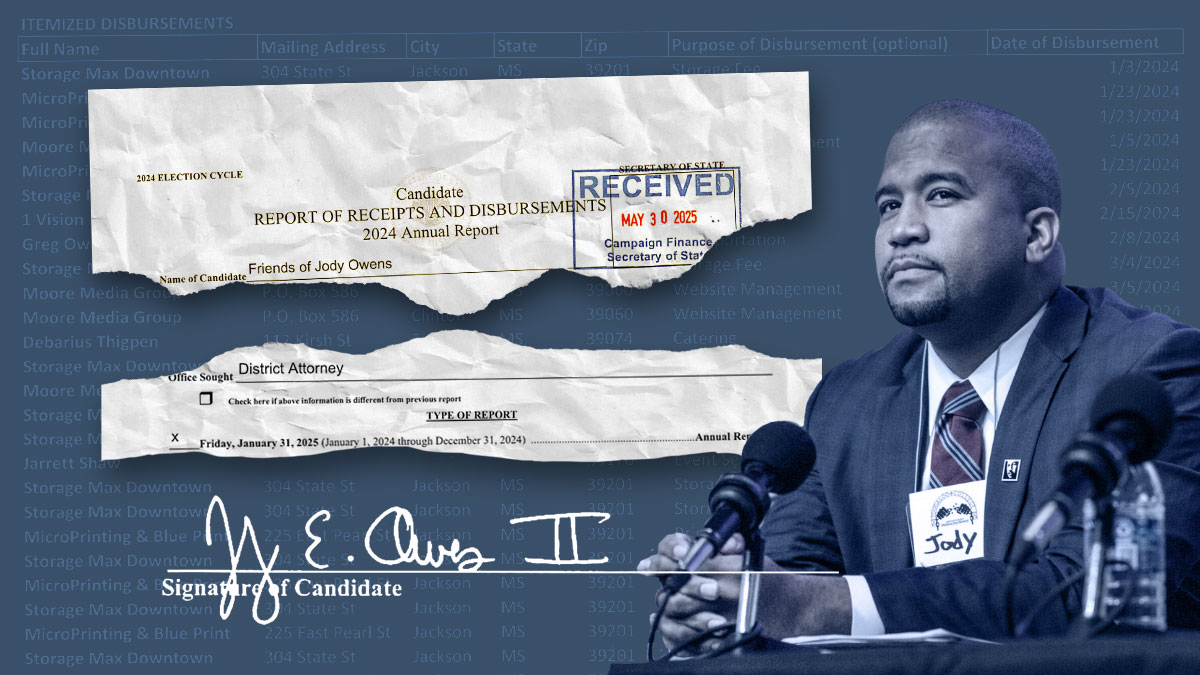Finance
Understanding the Basics of 21st-Century Finance Capitalism

It has been a tumultuous week for the stock market, as Donald Trump’s quest to reshape the global capitalist order has sent investors into a frenzy. Where is all of this headed? Who knows. But going into a possible trade war, it’s worth stepping back to reflect upon the shape of our financial system.
To start: What are the most important developments on Wall Street in recent years? The short answer: massive asset managers — above all, the “Big Three” of BlackRock, Vanguard, and State Street — have become the dominant players in the financial system and the economy more broadly.
What do the Big Three do? They provide a basic financial service to investors: in exchange for a fee, asset managers invest their clients’ money in financial markets, for the most part in the stock market, or “public equities.” That sounds innocuous enough — until one understands just how much money we’re talking about.
Take BlackRock. By the end of 2024, this single firm possessed $11.5 trillion in assets under management (AUM). Adding in Vanguard and State Street, the Big Three together manage more than $26 trillion.
What does that amount of money look like in practical terms? Collectively, the Big Three are either the largest or second-largest shareholder of almost every company listed on the S&P 500 — which is to say, of the biggest corporations of the world. On average, they together control more than 20 percent of each of those companies: 25 percent of Chevron, 21 percent of Costco, 20 percent of General Motors, and so on. Not since large banks dominated the United States and German economies in the late-nineteenth and early twentieth centuries have we seen such a fusion of ownership and control of corporations on a scale that warrants the moniker “finance capital.”
Meanwhile, “alternative asset managers” have also grown at a rapid clip in recent decades. Alternative asset management is a broad category that includes private equity, real estate investment, hedge funds, and more. Blackstone, the largest alternative asset manager, now oversees more than $1 trillion.
While not operating on the scale of the Big Three, alternative asset managers collect much higher fees per dollar of AUM and play an important role in modern capitalism. Since the leveraged buyout boom of the 1980s, the threat of being acquired by alternative asset managers like private equity firms has enforced discipline on corporations. This, in turn, reinforces the power of shareholders, including the Big Three. More recently, alternative asset managers have expanded further into infrastructure (e.g., airports, utilities, pipelines), a move that threatens to further privatize public goods. They have also built on “private credit” arms, which enable them to function like banks but without the same regulatory oversight.
Complicating our picture, BlackRock has engaged in a series of acquisitions (Global Infrastructure Partners, HPS Investment Partners, and Preqin) and has even attempted to purchase the firm that operates the Panama Canal. To the extent that this represents an intention among the Big Three to expand beyond publicly traded markets and to establish a greater presence in alternative asset management, their power may well grow still further.
There is a lot of debate about what all of this means, but most observers agree on three basic features of the new finance capital that impact corporate governance.
First, for certain asset managers, “exit” from any given company that they are invested in is not an option. In the past, investors dissatisfied with the performance of a company simply sold or threatened to sell their shares. The Big Three do not have that luxury. Given the scale of their positions, dumping shares would have adverse effects on the entire market; this, in turn, would hurt their overall portfolios. Among the key products they offer investors are cross-market index funds, which by design include just about every company.
Second, for the Big Three, their index funds — mutual funds and exchange traded funds (ETFs), which provide investors with access to the entire market in one swoop — are part of a “passive investment strategy” among asset managers. These firms do not actively try to “beat the market” or bet on winners and against losers. Instead, they are committed to holding the widest range of assets for the long run.
Finally, both of these previous points result from the status of the Big Three as “universal owners,” meaning they almost literally own a bit of everything. Because of their exposure to the entire publicly traded market, and because they operate on a fee-based model, asset managers have an interest in seeing share prices continually appreciate in value. For them, the function of the stock market is not to raise capital that specific businesses can use to expand investments in their companies. Rather, it is simply to enlarge the wealth of investors.
Labor in the United States initially responded to finance’s rise by attempting to ride the wave of shareholder primacy, using its growing pension funds to speak as shareholders, filing shareholder proposals, and using other corporate governance mechanisms in the hope of nudging corporations to act responsibly. Over time, unions and other social movements have also sought to engage with larger pools of capital like public pensions, and the asset management industry, with similar goals in mind.
The logic behind this approach is that pension funds, in particular, represent “workers’ capital.” These funds should not, therefore, undertake investments that actively harm the workers whose interests they were established to serve. For instance, it is not hard to see the irrationality of public pension funds — whose beneficiaries are public employees — choosing to invest in firms actively seeking to privatize public goods.
This workers’ capital movement has been part of the broader effort to instill environmental, social, and governance (ESG) principles in institutional investors’ fiduciary calculations. While ESG has become a lightning rod for the political right, the basic idea is hardly radical. Everything from rising sea levels to executive compensation to the threat of strikes introduce risks that investors ought to keep in mind. Over the years, organizers have successfully pushed certain institutional investors to operationalize their ESG frameworks by reducing investments in industries like fossil fuels and tobacco, and working with asset managers to resolve labor disputes at companies held in their portfolios.
Without diminishing the value of these efforts, it is important to stress that the workers’ capital and broader ESG strategies basically take the structural confines of the new finance capital as a given. The problem, however, is that this financial colossus is profoundly and unavoidably integrated with processes that drive exploitation, ecological degradation, and public sector retrenchment.
This is not to say that this is a uniquely “parasitic” system that profits at the expense of the “real economy.” It is true that the incredible growth in Wall Street’s power over the past generation has come to some degree at the expense of authority of individual businesses. But finance’s ability to enforce discipline on the corporation has also strengthened management’s hand over labor. Wall Street and Main Street are inextricably wound up together.
Labor and other social movements have related to the new finance capital in a manner similar to that of the proverbial frog in a boiling pot: picking up small victories here and there while the water gets even hotter. Building the kind of working-class power that stands a chance at meaningfully improving living standards and preserving the planet will require a far more serious reckoning with the structure of ownership and control in the twenty-first-century capitalist economy. There is no easy way out of this mess other than breaking the cycle that got us here in the first place.

Finance
Indicted Jackson prosecutor's latest campaign finance report rife with errors

Finance
Fed independence faces a ‘showdown’ between Trump & the market
00:00 Speaker A
I also want to ask about what’s going on with economic data and the Federal Reserve, guys. Um, Ed, what are you hearing there in D.C.? Right? There is now some reporting out there that Kevin Hassett is kind of the front-runner to potentially take Jay Powell’s place at the Federal Reserve. What are you hearing and what’s the kind of vibe in Washington around this decision?
00:43 Ed
So, Julie, the way I’d view this is that President Trump always loves competition. You know, he came to some of his most recent national prominence by having the Apprentice show. And so, my expectation is that President Trump is going to keep multiple people in the running. Kevin Hassett certainly is in there. Kevin Warsh is in there. I’d put Christopher Waller, who’s already on the Fed board, as well as Treasury Secretary Bessant. I’m watching to see if there’s an opening on the Fed. If a governor steps down, like Michael Barr, now that he’s no longer vice chair for supervision, does one of these individuals get onto the board? I’m also watching for Waller as there are rate decisions here in July and September. Is there going to be a dissent? You generally don’t see dissents among Fed governors, but as you’re auditioning for that role, showing that you would be much more dovish is something that President Trump is going to be looking for and could move him up the list of potential Fed chairs come May of next year.
02:26 Speaker A
Yeah, I think the Apprentice Federal Reserve edition is something that no one asked for, uh, guys. I don’t know, Dory, like, in terms of market reaction to all of this, um, you know, we’ve seen rates kind of remain range-bound here as we get numbers like CPI yesterday and PPI today. But do you think at some point that this competition is going to start to really come to bear in the bond market?
03:25 Dory
Uh, yeah, I think we have a showdown coming. Uh, most people in the marketplace want to preserve the independence of the Fed, and when I say that, I mean that both ways, not just from Trump’s standpoint, but from the Fed’s standpoint. I’ve always said the Fed is, in my mind, Powell being a little political in some of his rate cuts early last year. Having said that, the market has always anticipated for the last couple of years anyway, uh, more rate cuts than actually should have happened or did happen. And I think we’re falling into that trap, and so is Trump as well. I’m kind of a wait-and-see kind of guy right now. I do think the next Fed chair is going to be one of those type of interviews, hey, I’m Donald Trump and I believe this, and if you believe this, I’d like to have you as Fed chair. That points to Hassett being the, uh, being, being there. And, uh, I think that’s going to get some criticism from the market. I think we need that independence. We need good independent valuation. Uh, and, and, you know, I think cutting too soon, soon could be, uh, extremely dangerous when we all know that our deficit is out of control, our debt is out of control, and we don’t want to become a Venezuela.
Finance
Fulton Financial’s (NASDAQ:FULT) Q2: Strong Sales

Regional banking company Fulton Financial (NASDAQ:FULT) reported Q2 CY2025 results topping the market’s revenue expectations , but sales fell by 1.9% year on year to $328.4 million. Its GAAP profit of $0.53 per share was 24.7% above analysts’ consensus estimates.
Is now the time to buy Fulton Financial? Find out in our full research report.
-
Net Interest Income: $254.9 million vs analyst estimates of $255.1 million (5.5% year-on-year growth, in line)
-
Net Interest Margin: 3.5% vs analyst estimates of 3.4% (6.2 basis point beat)
-
Revenue: $328.4 million vs analyst estimates of $318 million (1.9% year-on-year decline, 3.3% beat)
-
Efficiency Ratio: 57.1% vs analyst estimates of 61% (3.9 percentage point beat)
-
EPS (GAAP): $0.53 vs analyst estimates of $0.43 (24.7% beat)
-
Market Capitalization: $3.56 billion
“I’m proud that our team has delivered a new company record, with operating net income of $100.6 million, or $0.55 per diluted share, this past quarter,” said Curt Myers, Chairman and CEO of Fulton.
Tracing its roots back to 1882 in the heart of Pennsylvania, Fulton Financial (NASDAQ:FULT) is a financial holding company that provides banking, lending, and wealth management services to consumers and businesses across five Mid-Atlantic states.
In general, banks make money from two primary sources. The first is net interest income, which is interest earned on loans, mortgages, and investments in securities minus interest paid out on deposits. The second source is non-interest income, which can come from bank account, credit card, wealth management, investing banking, and trading fees.
Over the last five years, Fulton Financial grew its revenue at a solid 8.4% compounded annual growth rate. Its growth beat the average bank company and shows its offerings resonate with customers.
We at StockStory place the most emphasis on long-term growth, but within financials, a half-decade historical view may miss recent interest rate changes, market returns, and industry trends. Fulton Financial’s annualized revenue growth of 8.3% over the last two years aligns with its five-year trend, suggesting its demand was predictably strong.
Note: Quarters not shown were determined to be outliers, impacted by outsized investment gains/losses that are not indicative of the recurring fundamentals of the business.
This quarter, Fulton Financial’s revenue fell by 1.9% year on year to $328.4 million but beat Wall Street’s estimates by 3.3%.
Net interest income made up 76.1% of the company’s total revenue during the last five years, meaning lending operations are Fulton Financial’s largest source of revenue.
-

 News1 week ago
News1 week agoVideo: Clashes After Immigration Raid at California Cannabis Farm
-

 News1 week ago
News1 week agoTrump heads to Texas as recovery efforts from deadly flood continue
-

 World1 week ago
World1 week agoNew amnesty law for human rights abuses in Peru prompts fury, action
-

 Movie Reviews1 week ago
Movie Reviews1 week agoMaalik Movie Review – Gulte
-
Movie Reviews1 week ago
‘Doora Theera Yaana’ movie review: Mansore’s mature take on relationships is filled with relatable moments
-

 Technology1 week ago
Technology1 week agoIt’s the final day of Prime Day 2025, and the deals are still live
-

 Politics1 week ago
Politics1 week agoDemocrat John Fetterman declares support for ICE, condemning any calls for abolition as 'outrageous'
-

 World1 week ago
World1 week agoRussia-Ukraine war: List of key events, day 1,235














